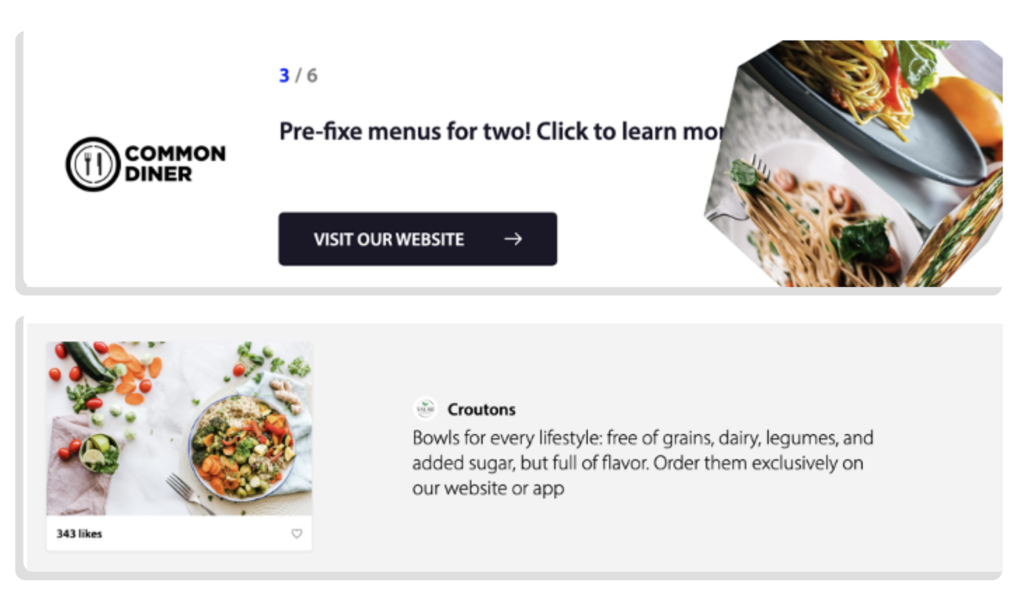
4 Steps to Pricing and Packaging Digital Ads and Sponsored Content
How to Package and Price Your Digital Ads & Sponsored Content
“How do I create valuable ad packages and how do I price them competitively?”
We hear this question more often than any other.
At Broadstreet, our business is pricing and packaging digital ads and sponsored content. Years of helping publishers create compelling and valuable ad campaigns have given us a unique inside look at the pricing and packaging trends across the industry.
From all of those local and B2B publishers, we’ve identified four steps to building and pricing a successful digital advertising package.
- Step One: Price Based on What You Need
- Step Two: Provide a Unique Solution
- Step Three: Deliver Value and Performance
- Step Four: Keep it Simple
Step One: Price Based on What You Need
When pricing your digital advertising campaigns, it can be easy to research your competitors and just create your pricing to match. However, this leaves out one critical component: your company’s needs.
Publishers need to price strategically to support the growth of their business. What is your business’s next stage, and what will it cost to get there? Once you know where you want to go, calculate the costs it takes to get there and add an additional 20% margin – that’s your revenue goal.
Go ahead — write down the number, Annual Recurring Revenue (ARR) that you need to achieve. Writing it down makes it real.
Pricing packaging for anything less that what you’ve calculated for your revenue goal is flat-out irresponsible.
But, determining your revenue goal is only half the battle. Now comes an equally important piece of the puzzle – how do you create an advertising plan that delivers on those revenue goals?
See the figure below: Let’s say you’ve done your calculations and determined that your company needs to generate an additional $250,000 in annual recurring revenue (ARR) to sustain your goal.
Breaking these big goals into smaller, more manageable sections is important. For instance, $250,000 ARR is about $62,500 per quarter or roughly $20,000 in annual bookings per month.
Just think, if you landed a single client that agreed to pay you $2,000 per month for a year — for a total of $24k in total bookings, you would already be exceeding your goal. Given 30 days, if you really had to, could you land a single client at $2k per month or 2 clients at $1k per month?
Create three advertising packages at difference price points to accommodate all the advertisers in your market. Not every business can afford to pay $2,000 a month, but you will be able to find advertisers that are more comfortable paying $500 to $1,000 each month.

See the sales plan above. This would require you to land 5 clients, collectively paying $5k/month for a total of $60k for the year. Now when you approach your sales team, don’t just ask, “Can you sell $250,000 this year?” Instead, ask them, “Can you sell this in 90 days?” You don’t have to sell your entire ARR at once. Dividing this up into smaller, 90-day goals is a lot more manageable.
Step Two: Provide a Unique Solution
Once you know your company’s revenue goal, now is the time to consider your competitors. But when you start your research, don’t ask, “What are they charging?” Ask, “What do they have to offer?”
Compare yourself to the competition – but do it the right way.
Don’t spend your time looking at their pricing. You don’t know their company’s ARR goals; you don’t know their traffic, audience, and targeting capabilities; and you don’t know how much they’re potentially over (or under) pricing their product.
Instead, look at what your competitors offer their advertisers and see what you can do differently.
Consider the natural uniques you bring to your advertisers: a defined niche audience, guaranteed ad placement, and personal service — some things your competition, especially Google and Facebook, don’t have.
The ability to say exactly where your advertiser’s ad will be located and how often it will be displayed establishes a confidence they can’t get from your competition. Beyond premium placement, while these Silicon Valley companies say they provide excellent targeting capabilities, it’s incredibly difficult for a business owner to do targeting the right way.
But these capabilities aren’t your only uniques. Your packages should also be made of unique media kit options, like ad formats, that your client can’t get from anyone else.
Nothing against a standard banner ad, but what can you offer a client that’s a bit more visual and engaging? Do you have ad formats that are interactive and tell a story? While Broadstreet offers an extensive library of unique ad formats, you don’t have to be a Broadstreet customer to level up your standard digital advertising assets.
Here are just a few ideas for more compelling ad formats:
- In-Story
- Sponsored Content Post
- Top Leaderboard
- Social Media Post
- Section Sponsorship
- Interstitial or Popup
- Newsletter Placement
The three examples below take standard ad spots to the next level. The ads introduce interactive elements such as automatically pulling current real estate offers, populating featured posts or articles, and updating hourly based on the client’s most recent social media post.

These visual and interactive ad units are proven to help you stand out during the initial sales meetings, have much higher click-through rates (CTR), and make it much more likely that clients keep their ad spend with your company.
Step Three: Deliver Value & Performance
Approaching your ad packages as a chance to provide a unique solution for your clients lets you establish your pricing based on the value you bring and the performance you can guarantee.
Anyone spending money, especially an advertiser, wants the best value they can find. If you can consistently deliver value, advertisers will surely stick with you and even consider expanding their investment.
So, how can you make sure you’re creating ad packages that deliver value? We’ve created a simple checklist for you to evaluate the value within your ad packages.
The Value Checklist for Digital Advertising
- Is there enough in this package?
→ Make sure you’ve put enough in the package to justify the price. - Will the performance set your company up for renewal?
→ Review the proposal to ensure your client will get results they’ll be so pleased with, they’ll continue coming back for more. - Would a client be crazy to not consider this?
→ When preparing the package, ensure it’s so enticing that the advertiser feels compelled to say “yes!” - Is your sales team excited and confident?
→ If your team isn’t excited and confident about the proposed package, a potential client won’t be either.
But to deliver the highest value, today’s advertisers are looking for partnerships over products.
Local businesses are not lacking in advertising opportunities. They are being pitched ideas left and right. And while you may create a proposal that’s unique and exciting, that’s only half the battle. They want your partnership and assurance that they’re going to be successful with their ad spend.
Most of your prospective clients are not advertising experts – but you are.
Think of your company as your client’s advertising partner. Communicate that your company will run your client’s campaigns, help make tough advertising decisions, and become personally invested in the success of those campaigns.
Pitching low-value products often results in low-value customers. We’ve seen that the higher priced ad packages are less about the actual products, and more about the partnership. If you want high-value clients, create high value packages that bring more than just products to the table.
Step Four: Keep it Simple
There is a fine line between creating a campaign that’s unique and valuable and creating a campaign that’s complicated and time-consuming.
A compelling and creative ad campaign must also be simple to execute. As you build out your advertising packages, look for opportunities to streamline the execution while also delivering better performance.
Campaigns that require a lot of back-and-forth communication between you, your client, and your creative team can quickly go from exciting to frustrating. Eliminate unnecessary friction with interactive ad formats that automatically populate based on content on the client’s website or social media pages.

Is your campaign simple enough to be written in a two-page Google Doc? Could you hand your plan to the least experienced person on your team and have them run it on their own? If the answer to these questions is no, you’re likely overcomplicating things.
Your sales team needs to have a close connection with their clients. However, it also needs to be remembered that the sales team members have a lot to do and can’t dedicate an endless amount of time to commit to a single ad campaign.
In general, it should take less than two hours to execute a campaign from start to finish.
How to Impress Your Clients & Drive Repeat Business
These four steps of digital advertising are critical to ensuring your publication’s continued success – whether you’re a new publisher trying to create baseline targets, you’re a publication with a long history but just starting with digital, or you’ve been running a successful digital ad program for years and want to make sure you’re keeping up with the competition.
You want to impress your clients, deliver an outstanding campaign, and drive repeat business – that’s why we do what we do. Selling unique products and positioning yourself as an advertising partner will help your business tower over all your competition.
>>> See how Broadstreet can help elevate your digital advertising program today! <<<
Subscribe to Our Blog
Stay up to date with the latest marketing, sales, and service tips and news.


